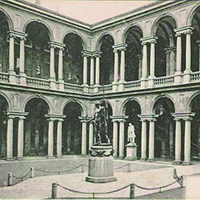SEMIOTICA DEGLI AFFETTI E MANIFESTAZIONI FISICHE NEI TESTI MEDICO-FILOSOFICI DI HALLE

All claims expressed in this article are solely those of the authors and do not necessarily represent those of their affiliated organizations, or those of the publisher, the editors and the reviewers. Any product that may be evaluated in this article or claim that may be made by its manufacturer is not guaranteed or endorsed by the publisher.
In the mid-eighteenth century in Halle the so-called doctors-philosophers tried to develop a scientifically-based map of emotions, which included their causes and their manifestations on the body. Thanks to their scientific rigour, to the literary quality of those studies and to the growing circulation of the journals of the time – above all Unzer’s famous Der Arzt – the subject was so popular that it became central in the debate on physiognomy and pathognomics which was so vivid in the second half of the century. These theories had a powerful import on literature, contributing to the birth of the new ‘character’ in novels as different from the traditional and stereotypical sense of the term as ‘temper’ or ‘nature’. In the field of aesthetics, the effect of these studies had important repercussions on Winckelmann’s revolutionary theories related to the representation and interpretation of emotions in art.


 https://doi.org/10.4081/incontri.2021.725
https://doi.org/10.4081/incontri.2021.725